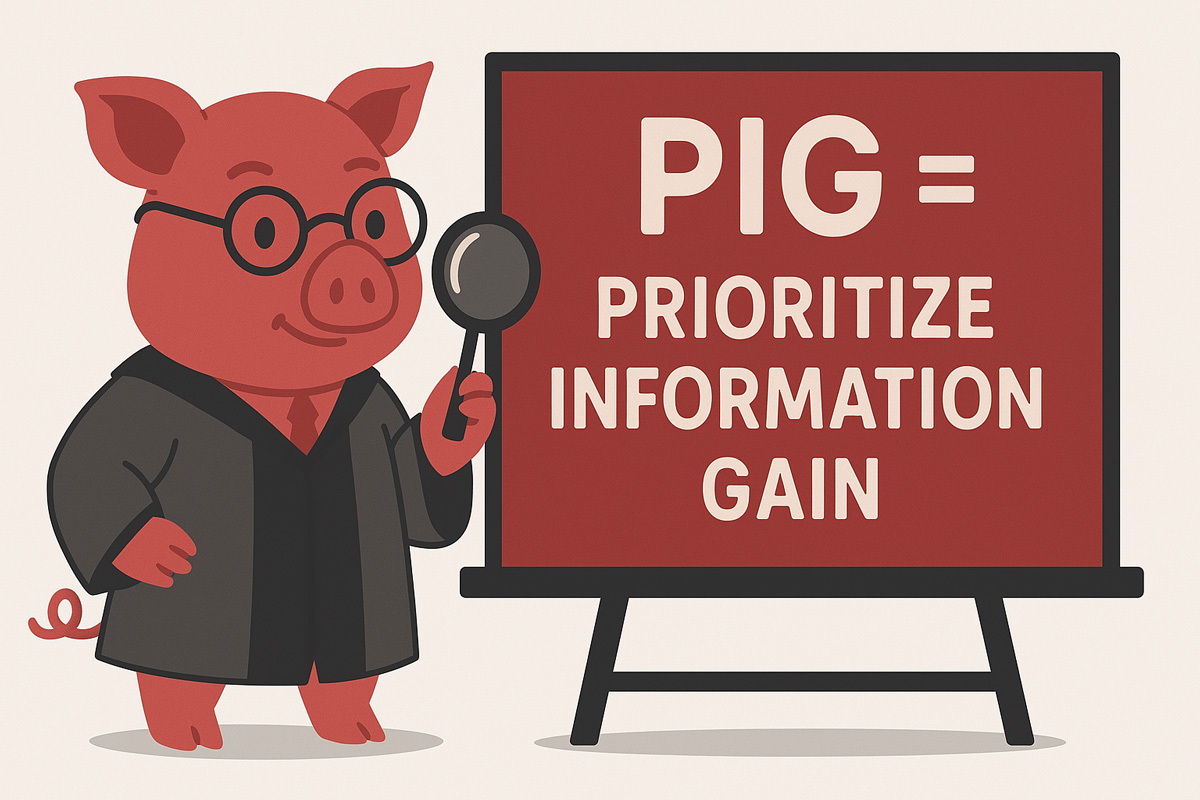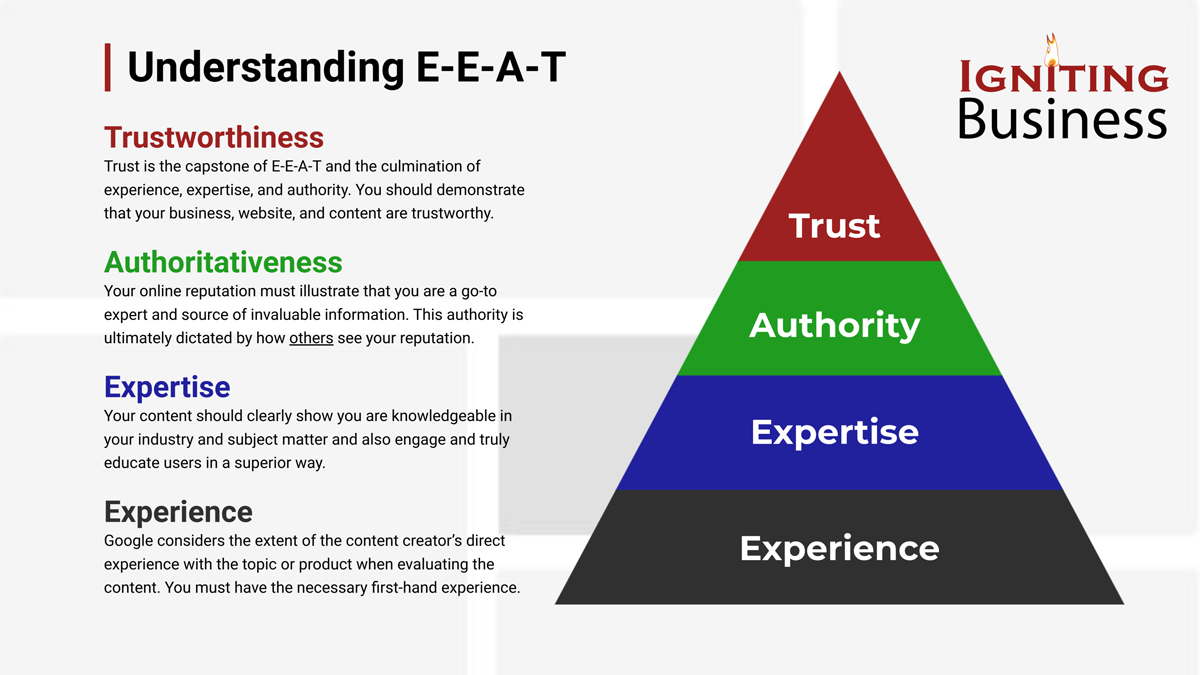Prioritize Information Gain (PIG) to Bring Home the SEO Bacon
While Search Engine Optimization (SEO) has been a practice since the 1990’s, it truly changes and transforms every single day. This constant state of flux is partly due to search engine behemoths, like Google, who continually update, tweak, and run experiments within their search engines with the stated goal “to provide you with the most useful and relevant information.” As a result of this goal, Google ran 16,871 live traffic experiments and ultimately released 4,781 updates to Google Search in 2023 alone. With 2024 and 2025 incorporating even more AI features, I extrapolate the number of changes and experiments will be significantly higher.
Additionally, now we also must understand how LLM (Large Language Models) work and respond to prompts within AI-powered portions of search engines like Google’s AI Mode and AI Overviews (AIO). Additionally, AI systems like ChatGPT, Gemini, Perplexity and more offer a new surface to monitor and optimize the presence of your brand and its associated services and products.
But with a constant state of change, how do search engine optimizers, digital marketers, and business owners ultimately adapt to give users, search engines, and LLMs what they want?
That’s what I [attempt to] answer in this article based on my experience working in web design, SEO, and digital marketing for over two decades with hundreds of small business clients in diverse markets. That said, know that the focus of this article is to help small business owners and multi-discipline marketers understand how the SEO landscape has already shifted and continues to shift.
As a quick thank you, I’ve had the outline of this article drafted for over two years, and Marie Haynes gave me the nudge I needed to prioritize sharing my perspective. If you’re not part of her SEO and AI focused community, you should definitely check it out.
Table of Contents
The Problem: An Eruption of Unhelpful Content
Thanks to website builder platforms and content writing tools, it’s easier than ever to both build a website and launch your content for the world to see. As a result of the launches of AI-powered content writing and editing tools like ChatGPT, Gemini, Claude, etc., the barriers of entry to mass producing content have essentially dropped.
The result: there is an eruption of generic content that has very little substantive benefit to its readers.

According to Statista, 5.9 million searches are conducted on Google search every minute which computes to roughly 8.5 billion searchers per day.
Yet, somewhat surprisingly, Google states that approximately 15% of daily Google searches are new queries.
As a result, there is a stronger need than ever for search engines and LLM’s to find and surface content with a high percentage of information gain.
What Is Prioritized Information Gain (PIG)?
Put simply, “information gain” is a piece of content that contains new information. A search engine, or LLM, must detect, crawl, understand, and ultimately recommend this content to users.
Keep in mind that that information gain can occur within different formats beyond just a text document. Search engines and LLMs can crawl and understand content in multiple formats ranging from text on a web page, images, PDFs, audio, video, and more.
Information gain also does not always have to be groundbreaking discoveries. Information gain can arguably be new perspective revealed by a unique person’s experience.
From some of our own internal experiments, in some cases, information gain can be an existing concept that is organized in a manner that adds a new level of simplifying understanding and practical application.
With such a massive number of queries, including brand new queries, Google is effectively hunting, or perhaps more accurately foraging, for information gain.
If you want to be successful at creating content that is valuable to users and rewarded by both search engines and LLMs, we believe your strategies should ultimately Prioritize Information Gain (PIG).

How Does Prioritizing Information Gain Impact SEO
PIG and SEO are not the same, but they are certainly intertwined at the core. SEO focuses on maximizing discovery and visibility. Ultimately, I believe prioritizing information gain (PIG) can serve as a guiding principle that impacts all the other SEO work you do.
For example, if you’re deciding what new content to write, and perhaps looking at keyword volumes or trends data in your favorite research tool, ask if you are really adding to the body of knowledge already on the topic?
If you’re figuring out what existing pages to revamp on your website, ask yourself what information is missing that the experts within your company could bolster by adding their unique experiences.
Google all but certainly rewards content with clear information gain. For example, Figure 5 in Google’s Patent US20200349181A1 shows a methodology for calculating “information gain score” which analyzes how unique your specific content is when compared to other content within the consideration set.
Prioritizing Information Gain (PIG) Gets Buzz, Brand Recognition, and Links
If you truly prioritize information gain, you will end up with content that delivers new data and insights which people (and search engines) truly value.
Even better, the deliverables that search engine optimizers seek out – traffic, brand mentions, citations, and glorious backlinks – all occur naturally when you share truly new insights and data that delivers value to your readers.

Of course, LLMs are certainly increasing the need for diversified distribution, but that’s a topic for another day.
PIG Satisfies E-E-A-T
Prioritized Information Gain (PIG) as a guiding strategy for your content creation satisfies E-E-A-T in a way that no other content will satisfy.
Bacon is just too dang delicious. I apologize to our readers that this analogy may offend.
When your content prioritizes information gain, that only you can prepare from your unique experience, seasoned with your expertise on the subject, the content will bring home the bacon.
Over time as you continue to prove your authority on the subject through continually focusing on information gain, additional trust develops from your readers and your reach expands.
How Do I Prioritize Information Gain?
Start with a series of questions:
- Is the content I’m creating actually helpful for my intended audience? Google has made so many updates in the past several years blatantly emphasizing that content creators (including SEOs like me) must prioritize creating helpful content. If it’s not helpful, people won’t continue reading it. Google has multiple methods of determining whether or not people benefit from the content and likely will not rank it well within its search engine if the content is unhelpful.
- If yes, ask “Do I have data, unique perspectives, or a novel way to present this content that ultimately adds to the field of knowledge about this particular topic?” If you are just rehashing what everyone else has said, then perhaps you should stop right there.
If you can answer the above questions with an emphatic yes, then create that content!
I hope you join me in prioritizing information gain (PIG) with the content you create this year and beyond. If you want to get more of our insights here at Igniting Business, feel free to subscribe to our free monthly newsletter. I share some of my team’s insights, plus we curate content that we appreciate from SEOs and digital marketers who are far smarter than me.
About the author
Ben Seidel is the CEO and Founder of Igniting Business. Ben has been serving hundreds of small businesses with web design and SEO services for over 15 years and covering digital marketing related topics since 2012.
Over the years, Ben has been recognized on a local and national level, including entrepreneurship awards from both the NFIB and NASE and being featured in publications such as CNBC Universal, Yahoo News, Intuit Small Business, CIO.com, Mizzou Magazine, and Fox Business.
